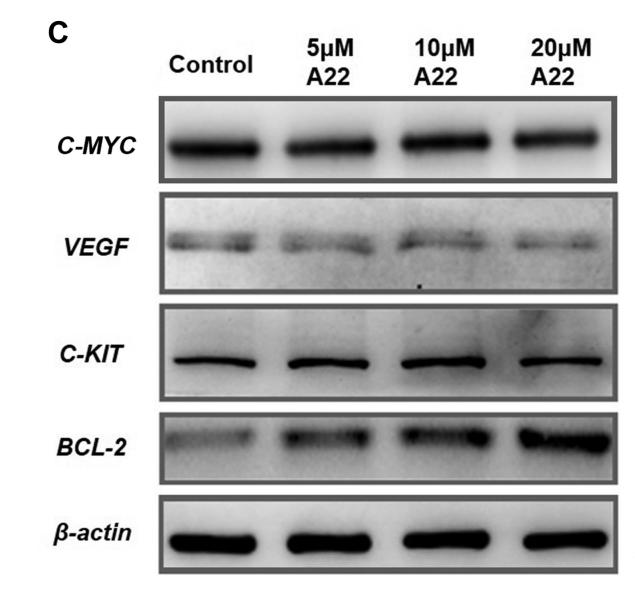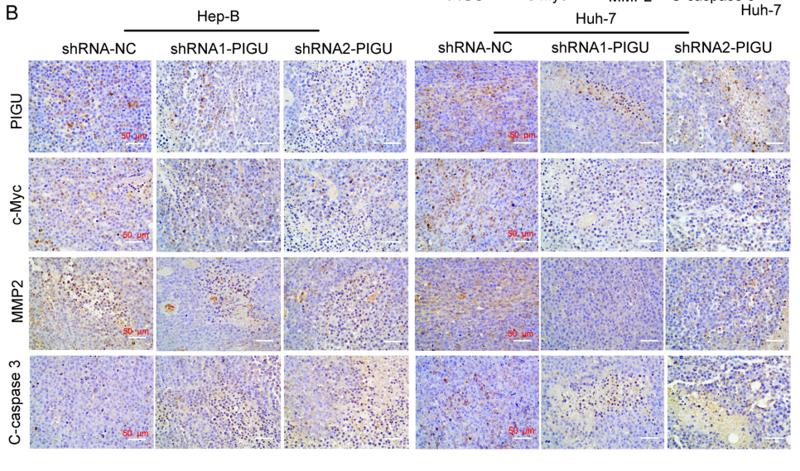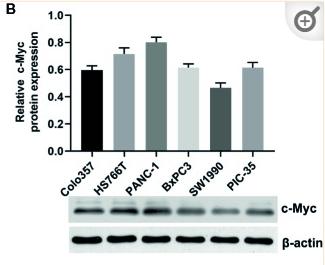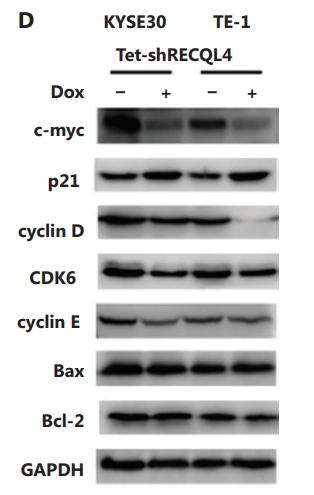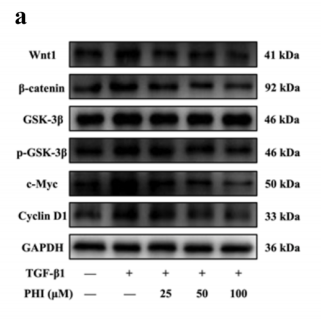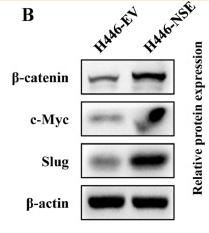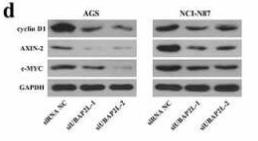产品描述
*The optimal dilutions should be determined by the end user.
*Tips:
WB: 适用于变性蛋白样本的免疫印迹检测. IHC: 适用于组织样本的石蜡(IHC-p)或冰冻(IHC-f)切片样本的免疫组化/荧光检测. IF/ICC: 适用于细胞样本的荧光检测. ELISA(peptide): 适用于抗原肽的ELISA检测.
引用格式: Affinity Biosciences Cat# AF6054, RRID:AB_2834973.
展开/折叠
AU016757; Avian myelocytomatosis viral oncogene homolog; bHLHe39; c Myc; Class E basic helix-loop-helix protein 39; MRTL; Myc; Myc protein; Myc proto oncogene protein; Myc proto-oncogene protein; myc-related translation/localization regulatory factor; MYC_HUMAN; Myc2; MYCC; Myelocytomatosis oncogene; Niard; Nird; Oncogene Myc; OTTHUMP00000158589; Proto-oncogene c-Myc; Protooncogene homologous to myelocytomatosis virus; RNCMYC; Transcription factor p64; Transcriptional regulator Myc-A; V-Myc avian myelocytomatosis viral oncogene homolog; v-myc myelocytomatosis viral oncogene homolog (avian);
抗原和靶标
- P01106 MYC_HUMAN:
- Protein BLAST With
- NCBI/
- ExPASy/
- Uniprot
MPLNVSFTNRNYDLDYDSVQPYFYCDEEENFYQQQQQSELQPPAPSEDIWKKFELLPTPPLSPSRRSGLCSPSYVAVTPFSLRGDNDGGGGSFSTADQLEMVTELLGGDMVNQSFICDPDDETFIKNIIIQDCMWSGFSAAAKLVSEKLASYQAARKDSGSPNPARGHSVCSTSSLYLQDLSAAASECIDPSVVFPYPLNDSSSPKSCASQDSSAFSPSSDSLLSSTESSPQGSPEPLVLHEETPPTTSSDSEEEQEDEEEIDVVSVEKRQAPGKRSESGSPSAGGHSKPPHSPLVLKRCHVSTHQHNYAAPPSTRKDYPAAKRVKLDSVRVLRQISNNRKCTSPRSSDTEENVKRRTHNVLERQRRNELKRSFFALRDQIPELENNEKAPKVVILKKATAYILSVQAEEQKLISEEDLLRKRREQLKHKLEQLRNSCA
种属预测
score>80的预测可信度较高,可尝试用于WB检测。*预测模型主要基于免疫原序列比对,结果仅作参考,不作为质保凭据。
High(score>80) Medium(80>score>50) Low(score<50) No confidence
翻译修饰 - P01106 作为底物
| Site | PTM Type | Enzyme | Source |
|---|---|---|---|
| Ubiquitination | Uniprot | ||
| S6 | Phosphorylation | Uniprot | |
| T8 | Phosphorylation | P04049 (RAF1) | Uniprot |
| Y12 | Phosphorylation | Uniprot | |
| Y16 | Phosphorylation | Uniprot | |
| Y22 | Phosphorylation | Uniprot | |
| Y32 | Phosphorylation | P00519 (ABL1) | Uniprot |
| K51 | Sumoylation | Uniprot | |
| K51 | Ubiquitination | Uniprot | |
| K52 | Sumoylation | Uniprot | |
| K52 | Ubiquitination | Uniprot | |
| T58 | O-Glycosylation | Uniprot | |
| T58 | Phosphorylation | P49841 (GSK3B) , P28482 (MAPK1) , P49840 (GSK3A) , P53779 (MAPK10) , P45983 (MAPK8) | Uniprot |
| S62 | Phosphorylation | Q13627 (DYRK1A) , P45984 (MAPK9) , Q00535 (CDK5) , P28482 (MAPK1) , P45983 (MAPK8) , Q92630 (DYRK2) , P53779 (MAPK10) , P42345 (MTOR) | Uniprot |
| S64 | Phosphorylation | Uniprot | |
| S67 | Phosphorylation | Uniprot | |
| S71 | Phosphorylation | P28482 (MAPK1) , P45984 (MAPK9) , P53779 (MAPK10) , P45983 (MAPK8) | Uniprot |
| Y74 | Phosphorylation | P00519 (ABL1) | Uniprot |
| T78 | Phosphorylation | Uniprot | |
| S81 | Phosphorylation | Uniprot | |
| K143 | Acetylation | Uniprot | |
| K148 | Acetylation | Uniprot | |
| K148 | Sumoylation | Uniprot | |
| K148 | Ubiquitination | Uniprot | |
| S151 | Phosphorylation | Uniprot | |
| K157 | Acetylation | Uniprot | |
| K157 | Sumoylation | Uniprot | |
| K157 | Ubiquitination | Uniprot | |
| S161 | Phosphorylation | Uniprot | |
| T244 | Phosphorylation | Uniprot | |
| S249 | Phosphorylation | P68400 (CSNK2A1) | Uniprot |
| S250 | Phosphorylation | P68400 (CSNK2A1) | Uniprot |
| S252 | Phosphorylation | P68400 (CSNK2A1) , P48729 (CSNK1A1) | Uniprot |
| K275 | Acetylation | Uniprot | |
| S277 | Phosphorylation | Uniprot | |
| S279 | Phosphorylation | Uniprot | |
| S281 | Phosphorylation | Uniprot | |
| S288 | Phosphorylation | Uniprot | |
| K289 | Ubiquitination | Uniprot | |
| S293 | Phosphorylation | Uniprot | |
| K298 | Ubiquitination | Uniprot | |
| K317 | Acetylation | Uniprot | |
| K317 | Sumoylation | Uniprot | |
| K323 | Acetylation | Uniprot | |
| K323 | Sumoylation | Uniprot | |
| K323 | Ubiquitination | Uniprot | |
| K326 | Sumoylation | Uniprot | |
| K326 | Ubiquitination | Uniprot | |
| S329 | Phosphorylation | P11309 (PIM1) , Q9P1W9 (PIM2) | Uniprot |
| S337 | Phosphorylation | Uniprot | |
| T343 | Phosphorylation | Uniprot | |
| S344 | Phosphorylation | Uniprot | |
| S347 | Phosphorylation | P68400 (CSNK2A1) | Uniprot |
| S348 | Phosphorylation | P68400 (CSNK2A1) | Uniprot |
| T350 | Phosphorylation | Uniprot | |
| K355 | Sumoylation | Uniprot | |
| K355 | Ubiquitination | Uniprot | |
| T358 | Phosphorylation | Q13177 (PAK2) | Uniprot |
| K371 | Acetylation | Uniprot | |
| S373 | Phosphorylation | Q13177 (PAK2) | Uniprot |
| K389 | Sumoylation | Uniprot | |
| K389 | Ubiquitination | Uniprot | |
| K392 | Sumoylation | Uniprot | |
| K392 | Ubiquitination | Uniprot | |
| K398 | Sumoylation | Uniprot | |
| K398 | Ubiquitination | Uniprot | |
| T400 | Phosphorylation | Q13177 (PAK2) | Uniprot |
| S405 | Phosphorylation | Uniprot | |
| K412 | Sumoylation | Uniprot | |
| K412 | Ubiquitination | Uniprot | |
| K422 | Ubiquitination | Uniprot | |
| K430 | Sumoylation | Uniprot | |
| K430 | Ubiquitination | Uniprot |
研究背景
Transcription factor that binds DNA in a non-specific manner, yet also specifically recognizes the core sequence 5'-CAC[GA]TG-3'. Activates the transcription of growth-related genes. Binds to the VEGFA promoter, promoting VEGFA production and subsequent sprouting angiogenesis. Regulator of somatic reprogramming, controls self-renewal of embryonic stem cells. Functions with TAF6L to activate target gene expression through RNA polymerase II pause release (By similarity).
Phosphorylated by PRKDC. Phosphorylation at Ser-329 by PIM2 leads to the stabilization of MYC (By similarity). Phosphorylation at Ser-62 by CDK2 prevents Ras-induced senescence. Phosphorylated at Ser-62 by DYRK2; this primes the protein for subsequent phosphorylation by GSK3B at Thr-58. Phosphorylation at Thr-58 and Ser-62 by GSK3 is required for ubiquitination and degradation by the proteasome.
Ubiquitinated by the SCF(FBXW7) complex when phosphorylated at Thr-58 and Ser-62, leading to its degradation by the proteasome. In the nucleoplasm, ubiquitination is counteracted by USP28, which interacts with isoform 1 of FBXW7 (FBW7alpha), leading to its deubiquitination and preventing degradation. In the nucleolus, however, ubiquitination is not counteracted by USP28 but by USP36, due to the lack of interaction between isoform 3 of FBXW7 (FBW7gamma) and USP28, explaining the selective MYC degradation in the nucleolus. Also polyubiquitinated by the DCX(TRUSS) complex. Ubiquitinated by TRIM6 in a phosphorylation-independent manner (By similarity).
Nucleus>Nucleoplasm. Nucleus>Nucleolus.
Efficient DNA binding requires dimerization with another bHLH protein. Binds DNA as a heterodimer with MAX. Interacts with TAF1C and SPAG9. Interacts with PARP10. Interacts with KDM5A and KDM5B. Interacts (when phosphorylated at Thr-58 and Ser-62) with FBXW7. Interacts with PIM2. Interacts with RIOX1. The heterodimer MYC:MAX interacts with ABI1; the interaction may enhance MYC:MAX transcriptional activity. Interacts with TRIM6 (By similarity). Interacts with NPM1; the binary complex is recruited to the promoter of MYC target genes and enhances their transcription. Interacts with CIP2A; leading to the stabilization of MYC.
研究领域
· Cellular Processes > Cell growth and death > Cell cycle. (View pathway)
· Cellular Processes > Cell growth and death > Cellular senescence. (View pathway)
· Cellular Processes > Cellular community - eukaryotes > Signaling pathways regulating pluripotency of stem cells. (View pathway)
· Environmental Information Processing > Signal transduction > MAPK signaling pathway. (View pathway)
· Environmental Information Processing > Signal transduction > ErbB signaling pathway. (View pathway)
· Environmental Information Processing > Signal transduction > PI3K-Akt signaling pathway. (View pathway)
· Environmental Information Processing > Signal transduction > Wnt signaling pathway. (View pathway)
· Environmental Information Processing > Signal transduction > TGF-beta signaling pathway. (View pathway)
· Environmental Information Processing > Signal transduction > Hippo signaling pathway. (View pathway)
· Environmental Information Processing > Signal transduction > Jak-STAT signaling pathway. (View pathway)
· Human Diseases > Infectious diseases: Viral > Hepatitis B.
· Human Diseases > Infectious diseases: Viral > HTLV-I infection.
· Human Diseases > Infectious diseases: Viral > Epstein-Barr virus infection.
· Human Diseases > Cancers: Overview > Pathways in cancer. (View pathway)
· Human Diseases > Cancers: Overview > Transcriptional misregulation in cancer.
· Human Diseases > Cancers: Overview > Proteoglycans in cancer.
· Human Diseases > Cancers: Overview > MicroRNAs in cancer.
· Human Diseases > Cancers: Specific types > Colorectal cancer. (View pathway)
· Human Diseases > Cancers: Specific types > Endometrial cancer. (View pathway)
· Human Diseases > Cancers: Specific types > Thyroid cancer. (View pathway)
· Human Diseases > Cancers: Specific types > Bladder cancer. (View pathway)
· Human Diseases > Cancers: Specific types > Chronic myeloid leukemia. (View pathway)
· Human Diseases > Cancers: Specific types > Acute myeloid leukemia. (View pathway)
· Human Diseases > Cancers: Specific types > Small cell lung cancer. (View pathway)
· Human Diseases > Cancers: Specific types > Breast cancer. (View pathway)
· Human Diseases > Cancers: Specific types > Hepatocellular carcinoma. (View pathway)
· Human Diseases > Cancers: Specific types > Gastric cancer. (View pathway)
· Human Diseases > Cancers: Overview > Central carbon metabolism in cancer. (View pathway)
· Organismal Systems > Endocrine system > Thyroid hormone signaling pathway. (View pathway)
文献引用
Application: WB Species: human Sample: HepG2
Application: IHC Species: Human Sample: HCC cells
Application: WB Species: Human Sample: pancreatic cancer cells
Application: WB Species: human Sample: ESCC cells
Application: WB Species: Mouse Sample: mHSC
Application: WB Species: Human Sample: SCLC cells
Application: WB Species: Human Sample: MKN-45 and Hs746T cells
限制条款
产品的规格、报价、验证数据请以官网为准,官网链接:www.affbiotech.com | www.affbiotech.cn(简体中文)| www.affbiotech.jp(日本語)产品的数据信息为Affinity所有,未经授权不得收集Affinity官网数据或资料用于商业用途,对抄袭产品数据的行为我们将保留诉诸法律的权利。
产品相关数据会因产品批次、产品检测情况随时调整,如您已订购该产品,请以订购时随货说明书为准,否则请以官网内容为准,官网内容有改动时恕不另行通知。
Affinity保证所销售产品均经过严格质量检测。如您购买的商品在规定时间内出现问题需要售后时,请您在Affinity官方渠道提交售后申请。产品仅供科学研究使用。不用于诊断和治疗。
产品未经授权不得转售。
Affinity Biosciences将不会对在使用我们的产品时可能发生的专利侵权或其他侵权行为负责。Affinity Biosciences, Affinity Biosciences标志和所有其他商标所有权归Affinity Biosciences LTD.

